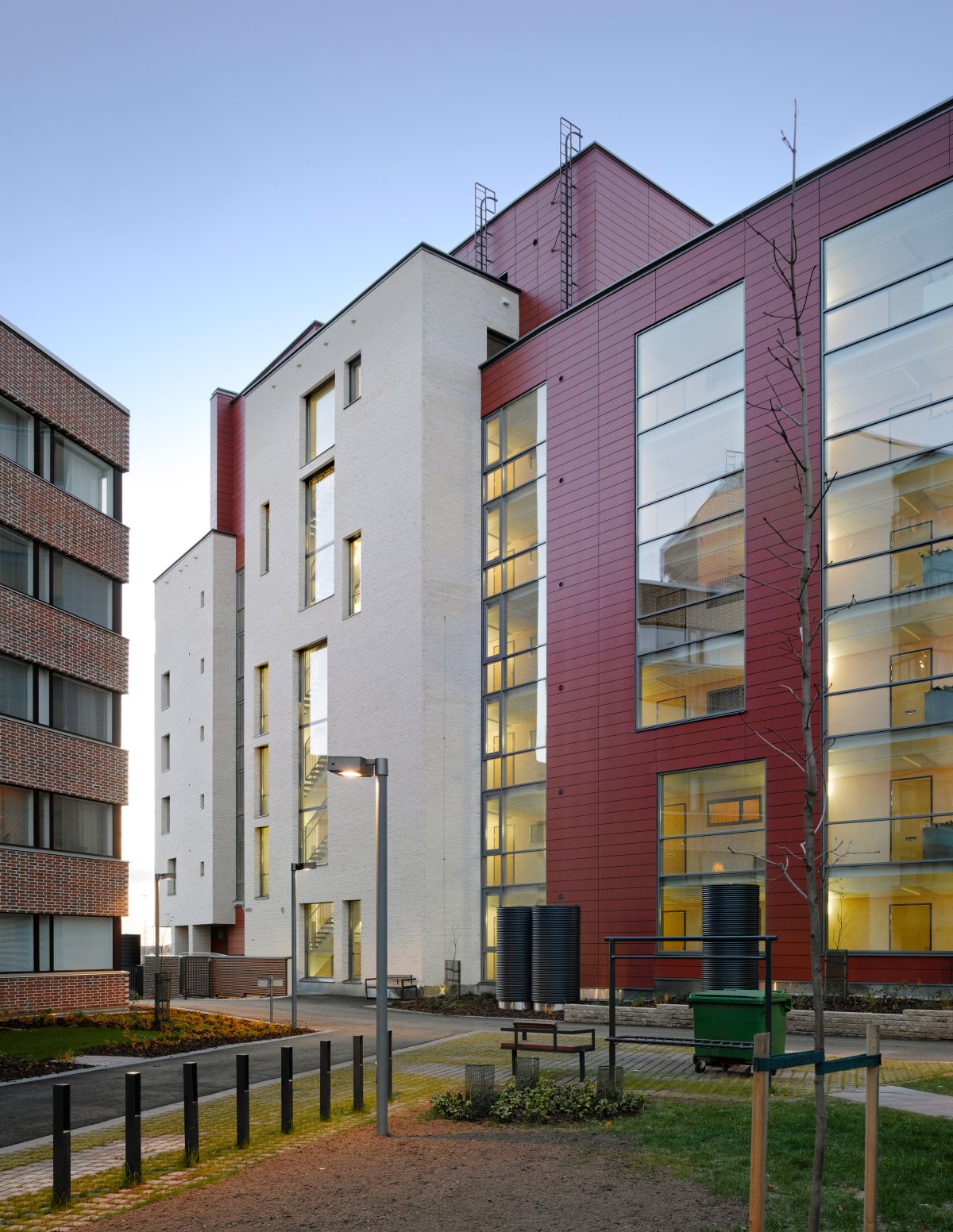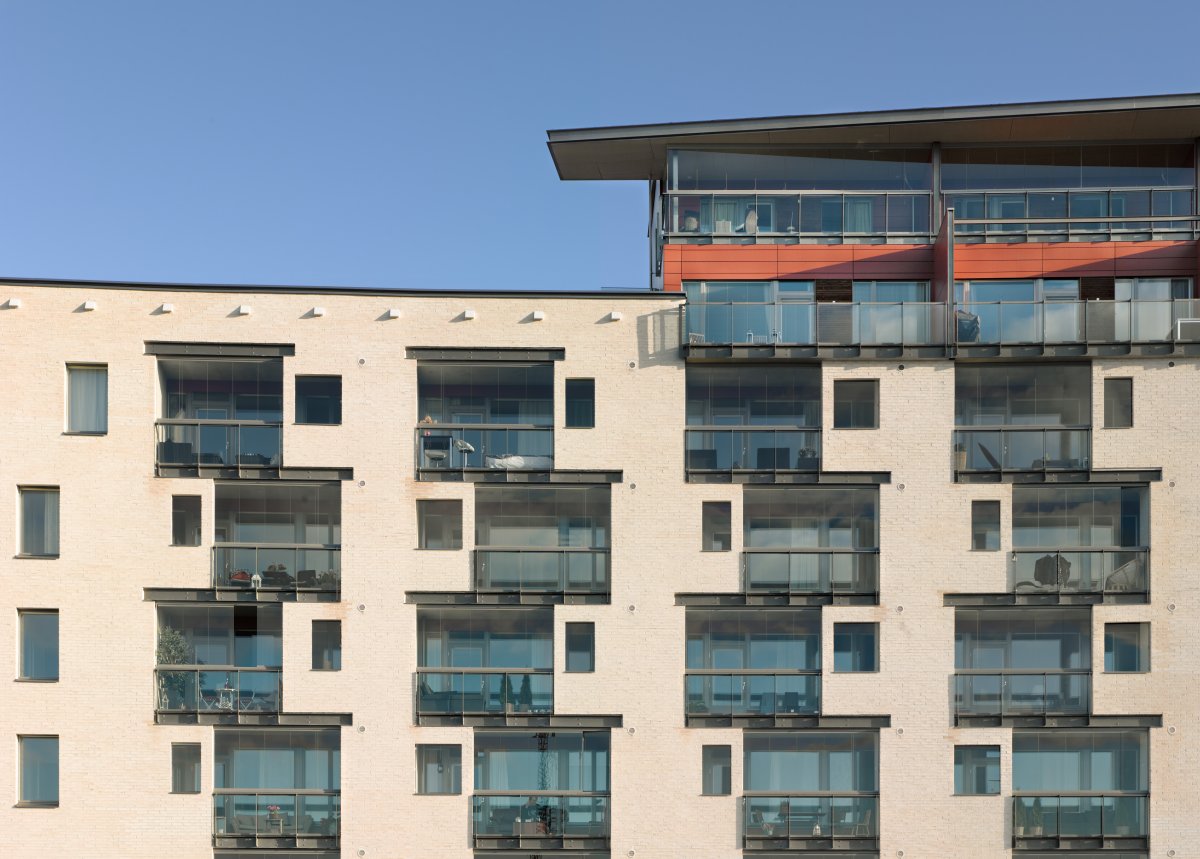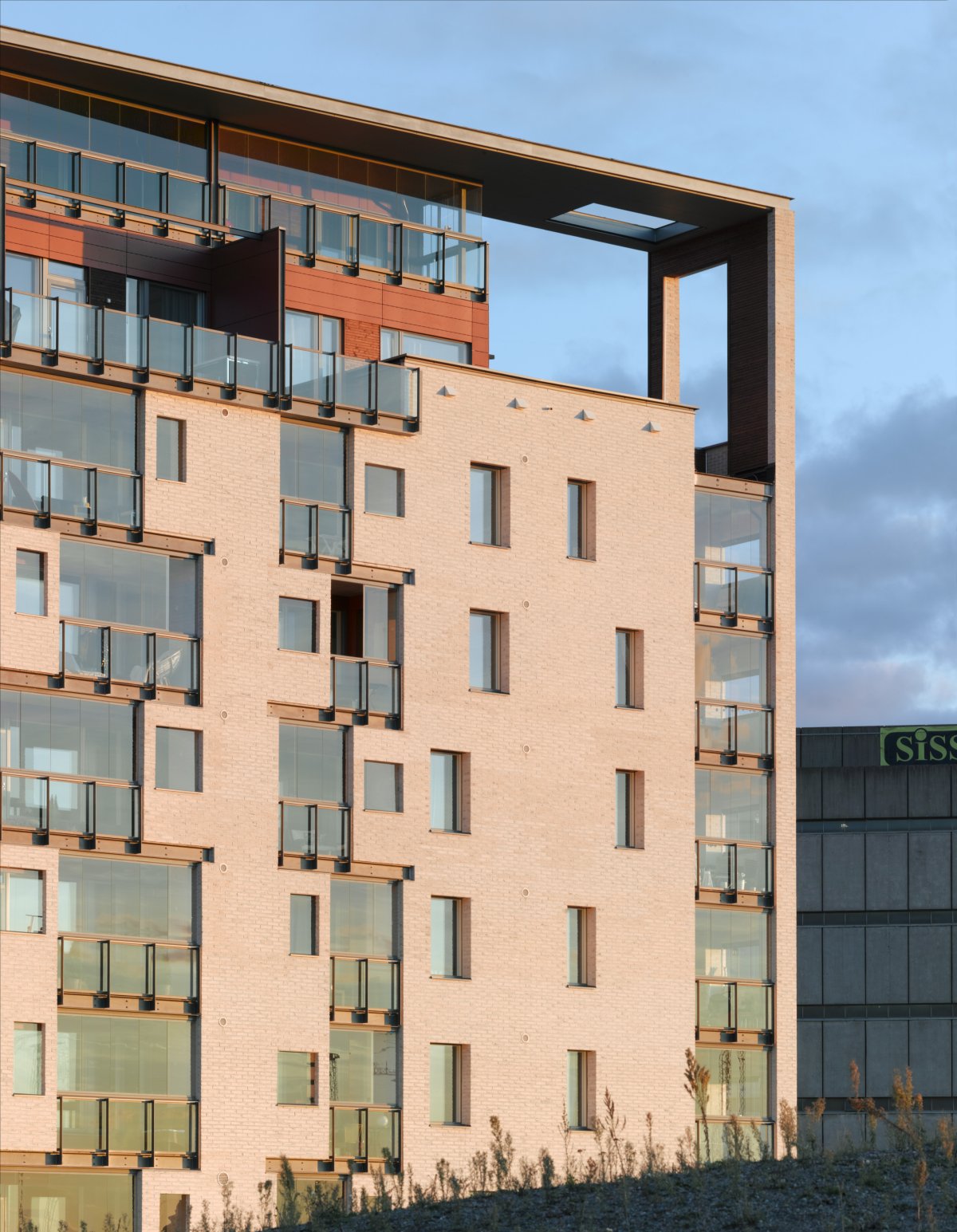A park (Hyväntoivonpuisto) extending through the whole neighbourhood forms the most important green area of Jätkäsaari. The Riontähti (‘star of Rio’) building was constructed alongside its eastern edge. Every flat has a west-north-west view of the park from a balcony or a terrace. The form of the building follows the curving border of the park. Arranged along well-lit access balconies, the flats vary in size from small, efficient two-room flats to the large two-storey flats of the uppermost floor. There are 42 flats in all.
The building has eight floors, the uppermost two recessed from the facade line as stipulated in the detail plan. The ground floor contains a commercial space on the side of Rionkatu street. The playgrounds and rich plantings with rowan and maple trees on the courtyard are shared with the other three buildings of the city block, and a shared garage is found under the courtyard deck.
The facade facing the park, built of pale mould cast Ruukintiili brick, is articulated with flat-specific balconies and varying openings of their blank parts. The courtyard facade features fibre cement sheeting in caput mortuum red to lend warmth to the private side. Warm colouring continues on the interior walls of access balconies, which are visible from the courtyard through large glass walls.
Further information in the Finnish Wikipedia and on the web page presenting historical maps of Helsinki Further information on the history of the islands of Helsinki in Tikkanen Sallamaria, Paratiisit ja niiden varjot, on the web page Ympäristöhistoria.



